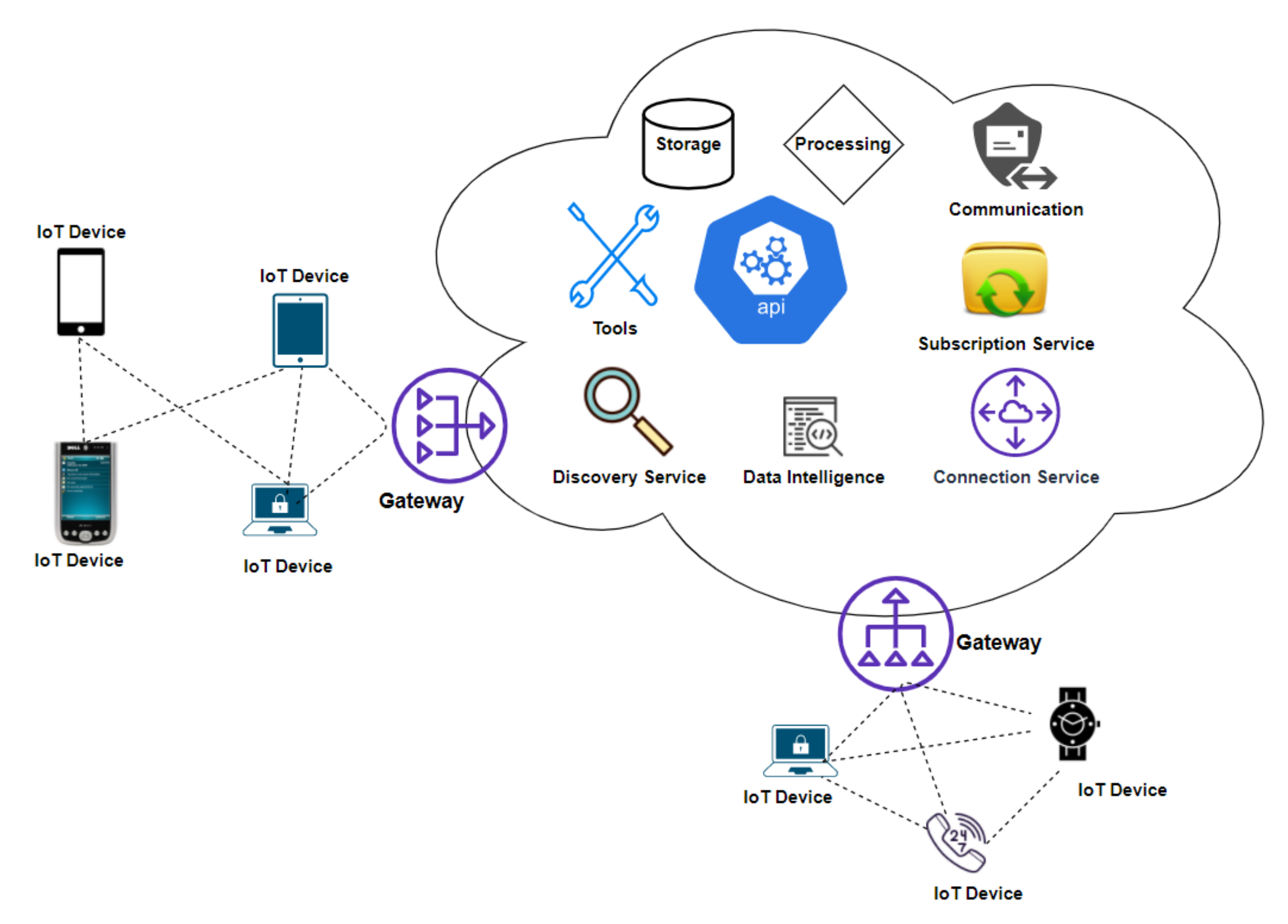How Cloud Computing Used In Internet Of Things(IOT)
Internet of Things (IoT) devices can communicate with cloud services, other applications, and even other IoT devices using cloud platform capabilities.Through these cloud platforms, users can remotely manage, monitor, and control IoT devices.
The cloud supports IoT identity and access management (IAM) services, scalable storage, device connectivity, analytics, and reporting.

When we think about IoT, we envision a world in which every everyday object is connected to the Internet, constantly sending and receiving data.This massive stream of data requires a powerful computing platform capable of managing the storage, processing, and analysis of this information.This is where cloud computing comes in.
By leveraging the cloud, IoT devices can offload their data to remote servers, eliminating the burden of local storage limits.The cloud offers virtually unlimited storage, ensuring that all the valuable data generated by IoT devices can be securely stored and accessed when needed.
In addition, cloud computing also provides powerful data processing and analysis capabilities.IoT data is often raw and unstructured, making it difficult to gain meaningful insights.The cloud-based platform can apply machine learning algorithms and perform advanced analytics, converting this raw data into actionable insights.
As the number of connected devices continues to grow exponentially, the cloud ensures that these applications can easily scale to meet growing demand.Additionally, the cloud enables seamless integration and interoperability between different IoT solutions.
Applications of Cloud Computing in IOT:
1.Data storage and processing: IoT devices generate huge amounts of data.Cloud computing offers scalable and cost-effective storage solutions to manage this data.IoT devices can securely send the data they collect to the cloud, where it is stored and processed.The cloud platform provides the necessary infrastructure and tools to process, analyze, and derive insights from IoT data.
2.Data analytics and machine learning: Cloud platforms enable complex data analytics and machine learning capabilities.By leveraging cloud-based analytics services, IoT data can be processed, aggregated, and transformed into meaningful insights.Machine learning algorithms can be applied to detect patterns, predict behavior, and automate decision-making based on data collected from IoT devices.
3.Device management and control: cloud-based IoT platforms provide centralized management and control of IoT devices.These platforms provide features such as device provisioning, configuration management, firmware updates, and remote control.By using the cloud, administrators can effectively monitor and manage a large number of IoT devices scattered in many different locations.
4.Scalability and flexibility: cloud computing provides the necessary scalability and flexibility required by IoT deployments.As the number of IoT devices and data volume increases, cloud platforms can meet growing demands seamlessly.Cloud infrastructure can dynamically allocate resources, scale up or down based on workload, and adapt to fluctuations in the connectivity and usage patterns of IoT devices.
5.Connectivity and integration: The cloud-based IoT platform acts as a device connectivity and integration hub.They enable interoperability by providing standardized protocols and APIs that allow different IoT devices and systems to communicate with each other.Cloud platforms can aggregate data from various sources and integrate it with other business systems, allowing for comprehensive viewing and analysis of IoT data.
6.Security and privacy: Cloud computing provides strong security mechanisms to protect IoT data.The cloud platform uses encryption, access control, and identity management techniques to ensure the security, integrity, and availability of IoT data.Centralized security measures can be deployed in the cloud to protect IoT devices against cyber threats.
7.Cost-effective: Cloud computing offers cost advantages for IoT deployments.Instead of investing in on-premises infrastructure, organizations can leverage cloud services on a pay-as-you-go basis, thereby reducing upfront costs.The cloud platform manages maintenance, scalability, and updates, allowing organizations to focus on IoT application development and innovation.
Conclusion: Cloud computing is the backbone of the IoT ecosystem, providing the infrastructure needed to manage massive amounts of data and enable the development of innovative IoT applications.